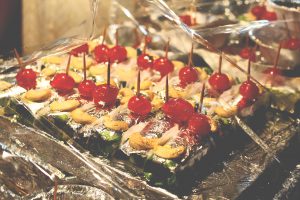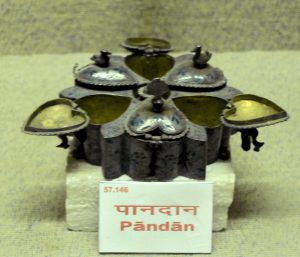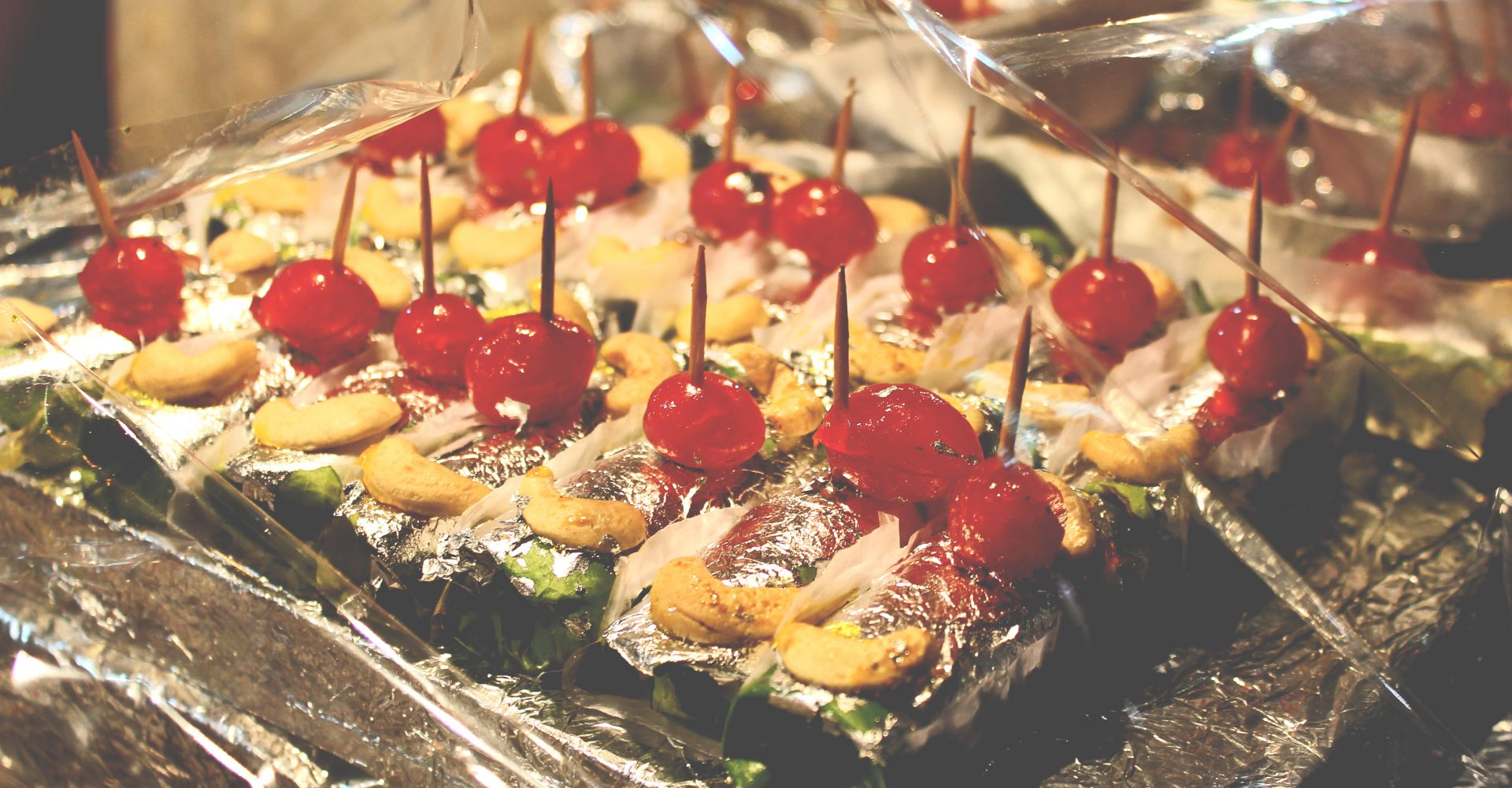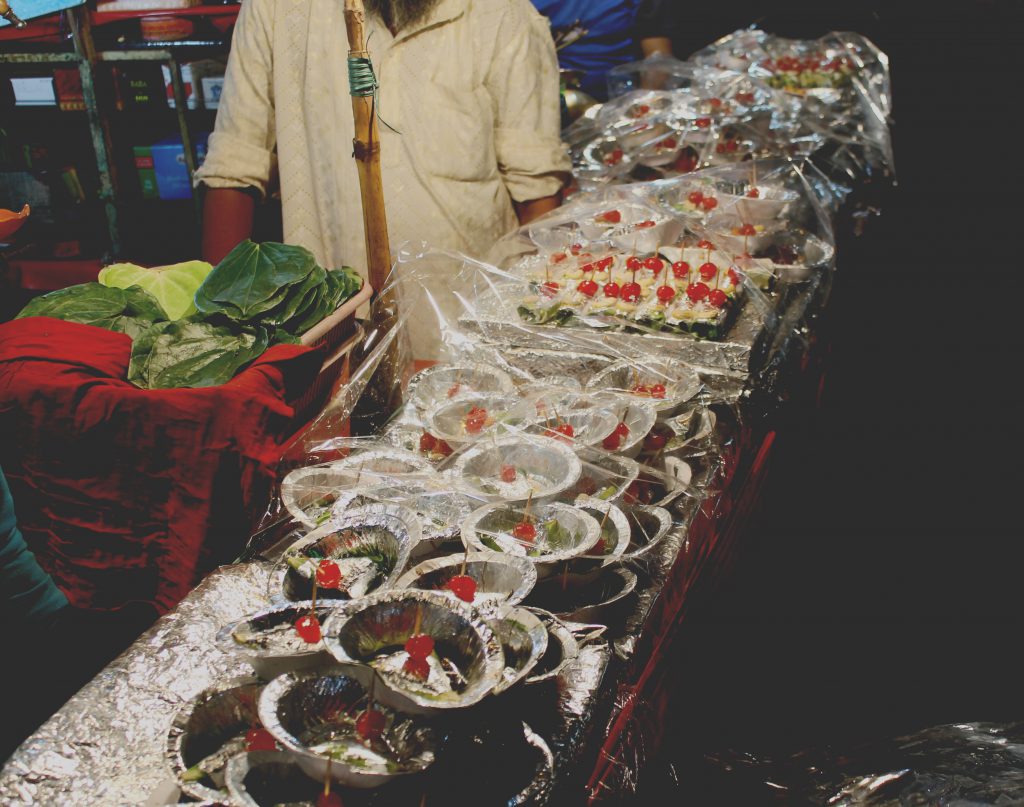Lucknow is one of those cities where dining etiquette forms an intrinsic part of the rich culture and prideful lineage. The ”tehzeeb” is restricted not only to the language or mannerisms but includes what and how people eat.
One such feature is offering Paan (Betel Leaf) to the guests on their arrival and also at the end of the meal, especially at social gatherings. Offering paan is indicative of the warmth that Lucknowites extend to their guests and the gratitude that they express for the presence of the guests.
Paan is not only a delicacy but has been a part of the Awadhi culture since the time it was included in the luxurious lifestyles of the Mughals and the Nawabs. Paan chewing is more than an activity. It is an important aspect of the lavish lifestyles of the kings of Awadh that continues to be an integral part of the social life of the city even today.
Paan chewing has certain styles and mannerisms attached to it and in Lucknow, it relates to the ever so famous “Nazaakat” and “Nafaasat” of the city with Paan being prepared and offered in the typical Lakhnawi style. To decode the Paan culture of Lucknow, continue reading our vivid account on it.
Lucknow and the Paan Fare
The association of the city with the green leaf dates back to the imperial times, when the Paan-chewing culture was all prevalent in the regal courts. The courts of the Mughals and the Nawabs had the culture of offering Paans to the guests, which were prepared with much skill and practice.
Within the households, the Paans were usually prepared in the Zenana (section for the women) and served in the courts to the guests. The tradition still continues in the households of the city of Nawabs where Paan is offered to the guests, depicting the Tehzeeb of extending a warm greeting. In fact, the guests are supposed to acknowledge the gesture through an “Adaab”, representing the recognition of the respect paid to them by the hosts.
Paan is a permanent feature of weddings and special occasions in Lucknow. Elaborate Paan booths are set up for the guests who relish this delight of Awadh especially after meals. Every locality of the city has its own and favourite Paan kiosk better known as “Gumti” and the seller as the “Paanwalah”. The “Gumti” is not only a shop where people get the customised Paans, which are prepared according to their likes but is also a spot where all the trending news is discussed, be that of national significance or local origin.
In fact, some of the Paan shops are very old and are renowned for offering Paans of different varieties. The 80 years old Azhar Paan shop located in Akbari Gate is one such place where you can get varied varieties of Paans such as Wajid Ali Shah ki Gilauri, Badami Paan, Begum Pasand, Pethe ka Paan, Zafrani Paan, Seeney mein dard ka Paan, Haazmey ka Paan, Khatta- Meetha Paan, Pistai Paan among the many other types of Paans.
Other famous Paan shops of the city are the Mehrotra Paan near State Bank of India Hazratganj, Soni Moni Paan shop in Indiranagar and Kamlesh Paan Bhandar near K.D Singh Babu Stadium, Hazratganj. Paan chewing is not just an activity in Lucknow, it encompasses a certain culture that illustrates the Nawabi era and has a certain protocol to be followed while chewing it.
Paan and its preparation
To prepare a perfect Paan, one needs practice to master the art. Paan is not just a betel leaf that is enveloped with requisite  ingredients and eaten. A Paan prepared with areca nut (dalli), catechu (Kattha), quick lime (choona), and cardamom (ilaichi) is known as the Plain Paan (Saada Paan). Besides these main ingredients, it may also contain peppermint, qiwaam, coconut, misri (sugar crystals), rose syrup, saffron, sweetened areca nut (sweet and scented supari), and cherry making it the most preferred sweet flavoured Paan.
ingredients and eaten. A Paan prepared with areca nut (dalli), catechu (Kattha), quick lime (choona), and cardamom (ilaichi) is known as the Plain Paan (Saada Paan). Besides these main ingredients, it may also contain peppermint, qiwaam, coconut, misri (sugar crystals), rose syrup, saffron, sweetened areca nut (sweet and scented supari), and cherry making it the most preferred sweet flavoured Paan.
The Paan is then folded in a triangle shape known as “Gilouri” and is also covered with “chandi ka warq” to make the Paan look more appealing. The Paan is inserted with a clove or a toothpick so as to prevent unfolding of the leaf. This Paan coated with a chandi ka warq is known as “Safed Paan” for its white appearance. As Paan chewing is a culture in Lucknow, its processing also entails skill and practice as adding all the ingredients in the right amount is the trick to preparing the right Paan.
Paan and the Paraphernalia
Paan is a delicacy and is very much a part of the cuisine culture of Lucknow city. After meals, especially the Mughlai food, people tend to have a craving for Paan. The Paan chewing culture of the Nawabi era found a place in the households that continues even today. As it involves the royalty of the Nawabs and the elite, the paraphernalia associated with it is also elaborate and used to be a status symbol for the Nawabs. The Paan has the following associates with it since the time it became a delicacy.
Paandaan
Paandaan is a box made of copper, brass, or silver and having few small containers and two being big sized ones for storing quick lime and catechu. The small containers along with a box in the middle are for storing cloves and cardamoms. The boxes are covered with trays and equipped with special spoons for the application of catechu and quick lime. All the containers are in turn covered with a big tray, overlaying the entire circumference of the Paandaan. Paans are generally kept enclosed in a soft and wet cloth on this tray.
and catechu. The small containers along with a box in the middle are for storing cloves and cardamoms. The boxes are covered with trays and equipped with special spoons for the application of catechu and quick lime. All the containers are in turn covered with a big tray, overlaying the entire circumference of the Paandaan. Paans are generally kept enclosed in a soft and wet cloth on this tray.
The Paandaans made in Lucknow are known for being exquisite and classy. Some Paandaans are small enough to be carried in hand whereas others are so big that they are attached with wheels for ease of movement within the house. The Paandaan is more commonly seen as an exclusive piece of artistry that adorns the living rooms of the people these days.
Nagardaan
Betel leaves are also stored in a container called the Nagardaan, which is a small box and is usually leaf-shaped. The Nagardaan finds a place next to the Paandaans. Freshly washed Paan leaves are stored in a Nagardaan.
Khaasdaan
Once the Paan is prepared with perfection, it is served with all the more refinement in a Khaasdaan. It is a tray that is covered with a lid and is used to serve the prepared Paans. In fact, serving Paans in a Khaasdaan comes under the ambit of the etiquettes of Paan chewing. Khaasdaans come in different sizes and shapes that lace the Paan chewing activity with the “Nafasat” and “Nazakat” synonymous with the city of Nawabs.
Ugaaldaan
Ugaaldaan, is a spittoon, which is used to spit the saliva that accumulates in the mouth while chewing Paan, better known as “Peek”. Ugaaldaan is a vital equipment of the Paan chewing activity as it involves the sophisticated disposal of the Paan, without spoiling the clothes of the person eating it or the surroundings. Today, unfortunately, people do not follow the etiquettes of Paan chewing and can be seen spitting the “Peek” anywhere much to the abhorrence of others. Ugaaldaans are a very common sight in the households of Lucknow where Paan chewing is a culture.
Paan Chewing Etiquette
Paan chewing was a part of the rich and royal lifestyle of the Mughals and the Nawabs. The activity is bound to have been symbolic of class, manners and etiquette to have become a part of the royalty. It starts with the manner in which the Paan is served in a Khaasdaan. After the serving, the person being served has to acknowledge it with a salutation. The Paan is kept on one side of the mouth and is allowed to soften before being chewed. The saliva that amasses in this process must be spitted in an Ugaaldaan with great care so as to avoid soiling and staining clothes, surroundings and even the sides of the Ugaaldaan. For this, the hand is placed on the mouth and the saliva is spitted without making any sound. Sadly enough, the etiquette is not followed today and one can easily see walls, staircases, streets, and even historical buildings defaced by the uninhibited “Peek” spitted here and there.
Paan chewing provides an insight into the lavish lifestyle of the Mughals and the Nawabs when chewing of the betel leaf was also an ostentatious activity. The grandeur of the large sized exquisite Paandaans, the perfection in preparation and serving of the Paan, and the mannerly Paan chewing act, all epitomize the class and royalty associated with it. The activity was readily taken up by the society and continues to be endorsed even today, though minus the glory and protocols. There is this serious need to re-educating and disciplining the paan-chewing citizens so that the city stays spotless clean.
In Lucknow, Paan chewing is an all prevalent activity finding its way in every part of the city, be it the old city or the new. The city has retained the special fondness for the betel leaf and continues to keep the culture of Paan chewing alive even today. Do not miss out on the special Paans of Lucknow on your trip to the city of Nawabs.



Comment here